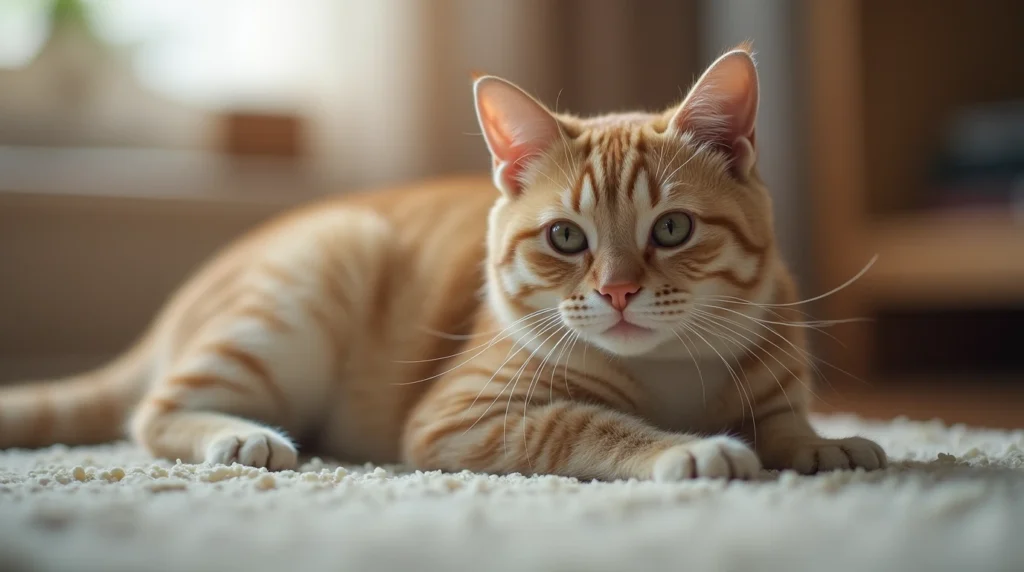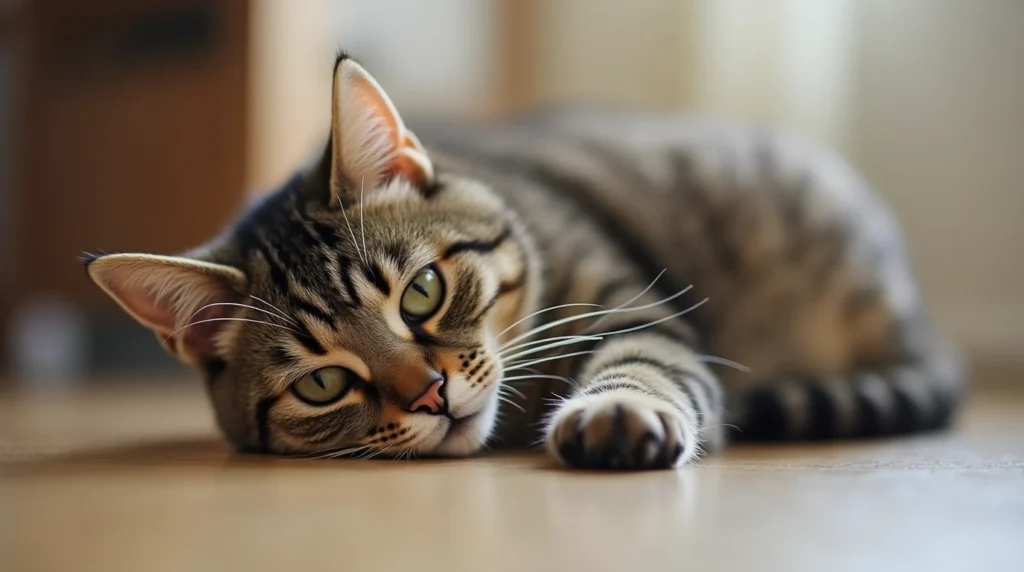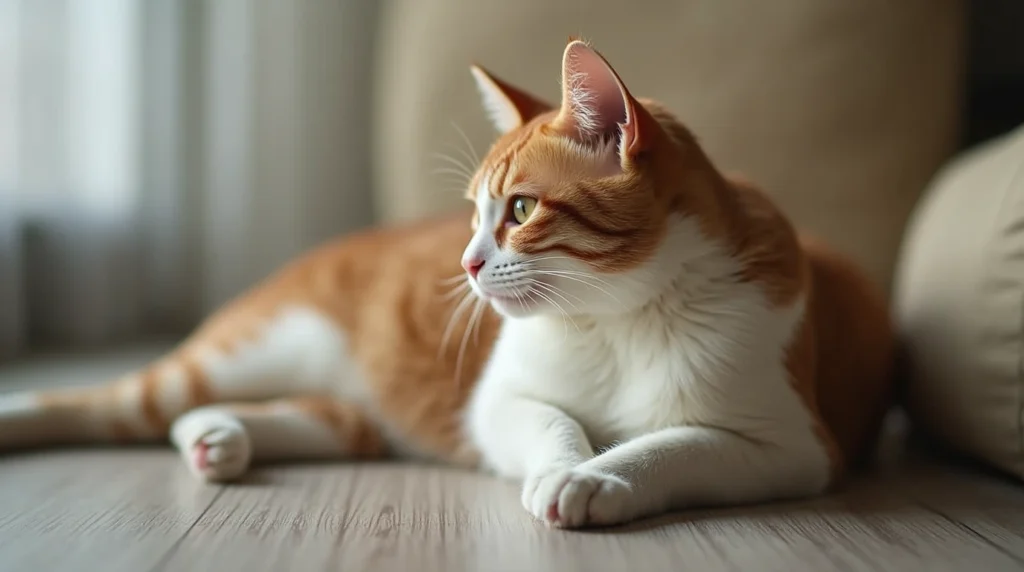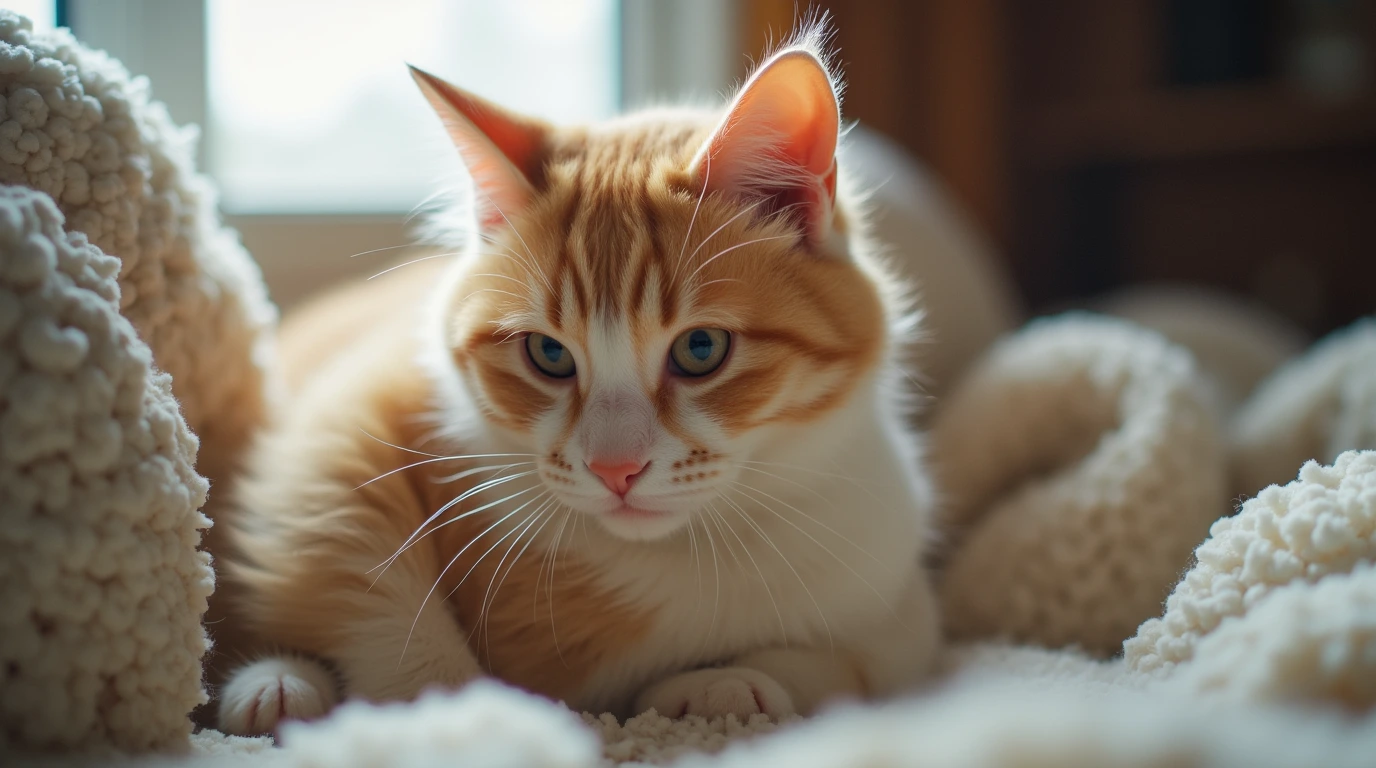Cats are known for their independent and mysterious nature. They can be affectionate one moment and aloof the next, leaving many pet owners pondering: what is going on inside their furry heads? One particular time when these enigmatic creatures show their true colors is after returning home. Whether your cat has been at the vet, spent time at a boarding facility, or simply had an outdoor adventure, their behavior after returning home can leave you wondering what they’re thinking.
Have you noticed your cat acting different after a period of absence? Perhaps they greet you with purrs and rub against your legs, or maybe they retreat to a quiet spot and remain distant. Understanding cat behavior after returning home can give you insight into your pet’s emotional world and help you create a more comfortable environment for them. This guide will dive deep into the various reactions your cat may display when they return, and how you can best respond to ensure their emotional well-being.
Table of Contents
Section 1: The Initial Reaction: What to Expect-cat behavior after returning home

When your cat first returns home, it’s natural for you to want to welcome them with open arms. However, the way your cat reacts might not always align with your expectations. The truth is, your cat may respond in a variety of ways, depending on their individual temperament and the circumstances of their absence. Here’s a look at some common behaviors:
What Your Cat Might Do Immediately
- Hiding: After being away, some cats may feel the need to retreat into a safe space. Whether it’s under a couch or in a favorite hiding spot, this behavior is their way of processing the change in environment. Cats are territorial creatures, and after a period of absence, they may need time to readjust to their surroundings.
- Exploring: On the other hand, some cats will be eager to check out their home again. They may sniff around, jump onto furniture, or even rub their face against doorways or objects to re-establish their scent and mark their territory.
- Vocalizing: Cats are known for being vocal, but after a trip, some may increase their meowing or chirping. This could be a sign that they’re trying to communicate their needs or simply letting you know they’re back.
Possible Signs of Stress or Anxiety
- Pacing or Restlessness: A stressed-out cat might pace around the room, unable to settle down. This can be a sign of discomfort or confusion, particularly if the environment has changed in any way during their absence.
- Excessive Grooming: If your cat is grooming excessively after returning, this could be a sign of stress. Cats often use grooming as a self-soothing mechanism when they’re feeling anxious or overwhelmed.
- Refusal to Eat: A cat who’s feeling unsettled may lose their appetite. If your cat doesn’t eat after returning home, it could indicate that they are stressed, or it might simply be due to a temporary upset stomach from their experience.
Signs of Comfort and Relief
- Purring: One of the clearest signs that your cat is feeling relaxed and at ease is purring. If your cat purrs after returning, it’s a good sign that they feel comfortable in their environment and with you.
- Rubbing Against You: Cats have scent glands on their cheeks and will often rub against you or furniture when they’re marking their territory. If your cat is doing this after coming home, it’s a sign that they’re feeling secure and have reestablished their connection with their space.
- Settling Into Familiar Spots: If your cat quickly returns to their favorite spots, like their bed or a sunny windowsill, it’s a sign that they feel at home again and are ready to relax.
Section 2: The Impact of Separation Anxiety on Cat Behavior-cat behavior after returning home
Separation anxiety is a very real concern for cats, especially when they are separated from their owners for an extended period. Whether it’s a trip to the vet, time spent at a kennel, or just a few days apart, your cat may show signs of distress upon your return. Let’s take a deeper dive into separation anxiety in cats and how it influences their behavior after being apart.
Separation Anxiety Symptoms
- Clinginess: After a period of separation, your cat may exhibit clingy behavior. They may follow you from room to room, jump into your lap more often, or want to be petted constantly.
- Meowing Excessively: Some cats will vocalize more than usual when they’re feeling anxious. This could manifest as meowing, yowling, or even howling in extreme cases.
- Destructive Behavior: Cats with separation anxiety may engage in destructive behaviors, such as scratching furniture, chewing on household items, or knocking things over.
How Long It Takes for a Cat to Adjust After Being Away
The adjustment period after returning home can vary depending on the individual cat and the circumstances surrounding their time away. Generally, most cats will begin to settle down within a day or two, but for some, it may take up to a week. During this time, your cat may still show signs of anxiety, but you can help ease their transition by maintaining a calm environment and giving them time to readjust at their own pace.
Tips to Ease Anxiety
- Maintain Routine: Cats are creatures of habit. Returning to their usual feeding schedule, playtime, and sleep routines can provide comfort and stability.
- Provide Safe Spaces: Set up quiet, cozy areas where your cat can retreat if they feel overwhelmed. This might be a bed in a quiet corner or a space with familiar scents like their blanket.
- Use Calming Products: There are various calming sprays, diffusers, and collars available that can help reduce anxiety in cats. These products use pheromones that mimic the natural scent that cats release when they feel calm and safe.
Section 3: Why Cats May Seek Solitude After Returning Home -cat behavior after returning home

While some cats become extra affectionate when they return home, others may seek solitude. This behavior is often linked to their need to process the changes they’ve experienced. Understanding why your cat may want to be alone is crucial in ensuring they feel safe and respected.
Instinctual Need for Space
Cats are territorial by nature, and after being away from their familiar environment, they may feel the need to reassert their ownership of the space. Taking some time alone allows them to recalibrate and check that everything is in its rightful place.
The Role of Scent and Territory
Scent plays a major role in how cats perceive their environment. When they return home after being away, they may take time to sniff around and confirm the familiar scents of their territory. If a cat has been boarded or exposed to unfamiliar scents, they may need time to adjust before feeling completely comfortable again.
When to Worry
If your cat remains withdrawn for an extended period or seems unwilling to engage, it could be a sign of ongoing stress or health concerns. Cats that refuse to eat, hide excessively, or act aggressively after returning home may need a visit to the vet to rule out underlying issues.
Section 4: Increased Affection and Attachment After Being Apart-cat behavior after returning home
On the flip side, some cats may become more affectionate after being away from you. This change in behavior often stems from their increased reliance on you for comfort and security.
Why Your Cat Might Seek Extra Cuddles
Being away from their owner can make a cat more appreciative of your presence. They may seek physical affection, such as curling up in your lap, rubbing against you, or following you around. This increased affection is their way of reconnecting with you after the separation.
Signs of Safe and Secure Attachment
- Purring: When cats feel safe and secure, they often purr as a sign of contentment. If your cat is purring more frequently after returning home, it’s a good indication that they are emotionally settled.
- Following You Around: Cats who are more attached to their owners may follow them from room to room, not wanting to be apart. This is a clear sign of the bond between you and your cat.
The Bond Between You and Your Cat
Your cat’s behavior after being apart is a testament to the bond you share. Cats are known to form strong attachments to their human companions, and the more positive experiences they have with you, the stronger the bond becomes. Showing love and patience when your cat returns will reinforce that bond, leading to a more trusting and affectionate relationship.
Section 5: Changes in Appetite and Eating Habits
Another important aspect of cat behavior after returning home is how your cat’s eating habits may change. Cats can be quite sensitive to their environment, and stress or changes in routine can directly affect their appetite.
Appetite Changes -cat behavior after returning home
- Eating Less: Cats that are stressed or anxious may lose their appetite. If your cat isn’t eating after returning home, it may simply be due to the emotional toll of the separation. Give them time, but also monitor their eating habits closely.
- Eating More: On the other hand, some cats may compensate for stress by overeating. They may eat more than usual as a way to self-soothe or regain a sense of control.
Why Some Cats May Eat More or Less After Being Away
How to Address Changes in Eating Habits
- Return to a Routine: Feed your cat at the same times each day to provide stability.
- Offer Familiar Food: If your cat’s appetite is off, try offering their favorite food to entice them back to their normal eating habits.
- Monitor Their Health: If appetite issues persist for more than a few days, it may be a good idea to consult a vet to rule out health problems.
Section 6: Behavior Adjustments Over Time -cat behavior after returning home

While your cat may initially display some unusual behaviors after returning home, most will settle back into their routine over time. However, this period of adjustment can vary depending on the individual cat.
When to Expect a Return to Normal Behavior – cat behavior after returning home
Typically, most cats will start returning to their normal selves within a few days after coming home. However, some cats may take a little longer. If your cat is particularly sensitive or had a stressful experience while away, it may take up to a week for them to fully adjust.
Behavioral Shifts – cat behavior after returning home
- Gradual Return to Normalcy: As the days go by, your cat will likely become more comfortable and start to behave in familiar ways. They may return to their regular eating schedule, start playing again, or stop seeking constant attention.
- When to Seek Professional Help: If your cat’s behavior doesn’t normalize after a week or if they continue to show signs of anxiety or distress, it’s best to consult with a veterinarian or animal behaviorist.
Conclusion -cat behavior after returning home
Understanding cat behavior after returning home is crucial for any cat owner. Whether your cat is acting clingy, withdrawn, or overly affectionate, it’s important to recognize the signs and respond accordingly. By providing a calm, safe environment, sticking to routines, and offering your cat the time they need to adjust, you can help ease their transition and maintain a strong bond.
FAQ cat behavior after returning home
Q1: Why does my cat hide when I bring them back home after a trip?
A1: Cats often hide after returning home as a way to process the change in their environment. They may need time to readjust to the smells and territory of their home. It’s completely normal, but keep an eye on them to ensure they don’t remain hidden for too long.
Q2: How long does it take for a cat to adjust after being away?
A2: Most cats will begin to settle within a few days, but some may take up to a week to feel fully comfortable again. Each cat is different, so give them the space and time they need.
Q3: My cat seems clingier after returning home. Is this normal?
A3: Yes, many cats become more affectionate after being separated from their owners. They seek comfort and reassurance as they reestablish their bond with you.
Q4: How can I reduce my cat’s anxiety after returning home?
A4: Stick to your cat’s normal routine, provide them with safe spaces to retreat to, and consider using calming products like pheromone diffusers to help reduce their anxiety.
Call to Action
Are you looking for more expert tips on understanding and caring for your cat? Visit www.meowrealm.com for helpful advice, product recommendations, and a community of fellow cat lovers. Don’t forget to share this article with your fellow cat owners, and help them understand their feline friends better too!
cat behavior after returning home cat behavior after returning home

